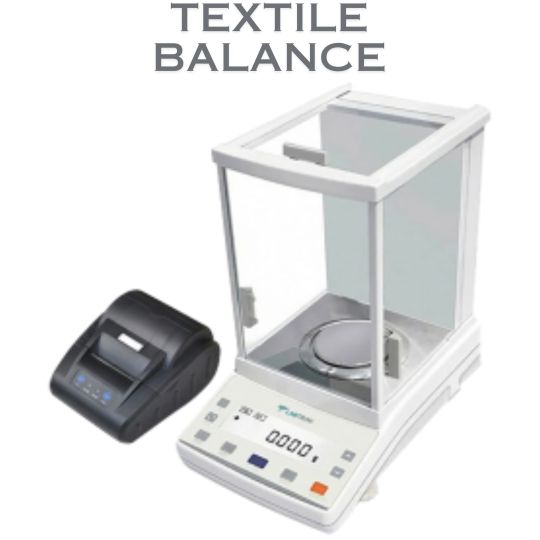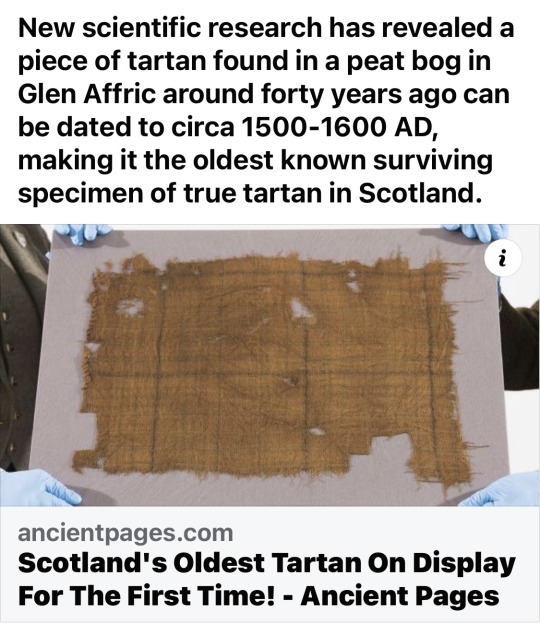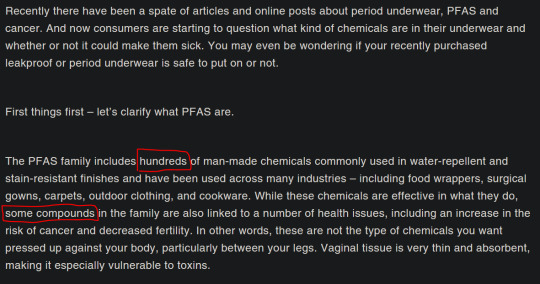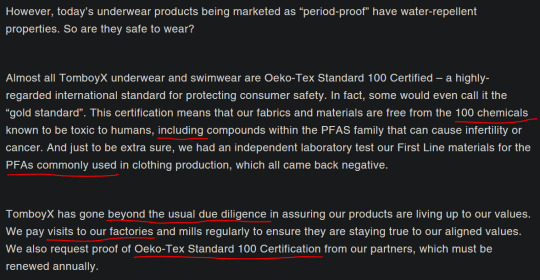#textile laboratory
Explore tagged Tumblr posts
Text
How Textile Laboratories Contribute to Textile Innovation and Material Development
The textile industry has always been at the forefront of innovation, driven by the demand for new materials, improved performance, and sustainability. To meet these ever-evolving needs, textile laboratories play a crucial role in researching, testing, and developing new fabrics, fibers, and materials. By providing scientific insights and rigorous testing, textile laboratories contribute significantly to the advancement of textile technology and material development.
In this blog, we will explore how textile laboratory contribute to innovation in the textile industry, how they support material development, and the impact of their work on the future of textiles.
What Are Textile Laboratories?
Textile laboratories are specialized facilities dedicated to testing and analyzing textile materials and products. These labs play a pivotal role in assessing the quality, durability, safety, and performance of textiles used in various applications, from fashion and home goods to medical supplies and industrial fabrics. Textile laboratories employ advanced equipment and expertise to conduct various tests, ensuring that textiles meet the required standards for performance and safety.
The role of textile laboratories has expanded beyond traditional quality control to include innovation and material development, as manufacturers seek new solutions to meet consumer demands and environmental challenges. By conducting research and development (R&D), textile laboratories contribute to discovering new materials, improving existing ones, and creating sustainable textiles for the future.
The Role of Textile Laboratories in Textile Innovation
Textile laboratories have become essential hubs for innovation, offering scientific research and development support to manufacturers and designers. Below are some of the key ways in which textile laboratories contribute to innovation in the textile industry:
1. Research and Development of New Materials
One of the primary functions of textile laboratories is to conduct R&D on new materials. These materials could include advanced fibers, innovative coatings, or new blends that offer enhanced performance features. With the ever-growing demand for smart textiles, eco-friendly fabrics, and high-performance materials, textile laboratories are crucial in developing new textiles that meet these needs.
For example, laboratories are involved in the development of smart textiles, which integrate sensors and other technologies to create fabrics that can respond to external stimuli such as temperature, light, or pressure. This innovation has applications in sectors like healthcare (e.g., wearable health-monitoring fabrics) and sportswear (e.g., garments that adjust to body temperature or moisture levels).
Moreover, textile laboratories also focus on biodegradable fabrics and recycled materials, contributing to the growing trend toward sustainability in the textile industry. By conducting research on alternative fibers such as hemp, bamboo, and organic cotton, textile laboratories are helping to reduce the environmental impact of textile production.
2. Performance Testing for New Textiles
Once new materials or textiles are developed, textile laboratories play an essential role in evaluating their performance. This involves subjecting fabrics to a series of tests to assess their physical and chemical properties. For instance, laboratories test materials for:
Durability: How well the fabric withstands wear and tear over time.
Strength: How much force the fabric can bear before breaking.
Water Resistance: How well the fabric resists water penetration, essential for outdoor and performance textiles.
UV Resistance: How effectively the fabric resists degradation from exposure to sunlight, which is crucial for outdoor gear and protective clothing.
Breathability: The fabric's ability to allow moisture to escape, which is essential for sportswear and activewear.
Stretch and Recovery: How well the fabric stretches and returns to its original shape, important for performance and comfort.
By assessing the performance of new materials, textile laboratories help manufacturers determine whether a fabric is suitable for its intended application. If the fabric meets the required standards, it can be commercialized for use in a variety of industries.
3. Developing Sustainable Textiles
Sustainability has become one of the most significant drivers of innovation in the textile industry. With growing environmental concerns and pressure from consumers, textile manufacturers are constantly looking for ways to make their production processes more eco-friendly. Textile laboratories are at the forefront of developing sustainable textiles, focusing on reducing the environmental impact of textile production, from fiber production to dyeing and finishing.
For example, textile laboratories are involved in the development of bio-based fibers, which are made from renewable sources such as plant materials, algae, or fungi. These fibers are biodegradable and have a significantly lower environmental impact compared to synthetic fibers made from petroleum-based resources.
Additionally, laboratories contribute to innovations in waterless dyeing technologies and zero-waste production processes, which minimize the use of water and chemicals in textile manufacturing. These advancements help reduce pollution, conserve natural resources, and promote a circular economy in the textile industry.
4. Innovation in Textile Coatings and Treatments
Textile laboratories also contribute to the development of innovative coatings and treatments that enhance the functionality of fabrics. For example, laboratories work on creating water-repellent fabrics for outdoor gear, flame-resistant textiles for protective clothing, and antimicrobial treatments for medical textiles. These innovations improve the performance, safety, and hygiene of textiles used in various industries.
Through R&D, textile laboratories can develop new coatings that offer improved durability and environmental friendliness. For instance, research into non-toxic, eco-friendly finishes has led to the development of textiles that are resistant to dirt, water, and stains without using harmful chemicals like perfluorocarbons (PFCs), which are harmful to the environment.
5. Tailored Fabric Development for Specialized Applications
Textile laboratories are essential in developing fabrics for specialized applications, whether it’s in medical textiles, automotive interiors, or military gear. These sectors require textiles with specific properties, such as biocompatibility for medical implants, fire resistance for protective clothing, and high strength for safety harnesses and ropes.
Textile laboratories work closely with manufacturers to design and test fabrics that meet the precise needs of these applications. They assess factors such as elasticity, strength, moisture absorption, and heat resistance to ensure the fabrics meet regulatory standards and offer the desired performance.
The Impact of Textile Laboratories on Material Development
Textile laboratories are not only contributing to the development of new materials but are also instrumental in improving existing ones. Through innovation, testing, and collaboration, textile laboratories help manufacturers enhance the functionality, quality, and sustainability of traditional fabrics like cotton, polyester, and wool.
For example, textile laboratories are working on enhancing cotton fibers to make them more durable, moisture-wicking, and resistant to wear. They are also researching ways to improve the performance of synthetic fibers by increasing their breathability and reducing their environmental impact.
Laboratories also conduct comparative testing between new and traditional materials, helping manufacturers make informed decisions about which materials are best suited for specific applications. This ensures that businesses can create textiles that meet both performance standards and consumer expectations.
Conclusion
Textile laboratories are key players in driving innovation and material development in the textile industry. By conducting research, testing, and development, these laboratories help manufacturers create high-performance, sustainable, and innovative fabrics for a wide range of applications. Whether it's developing smart textiles, enhancing the durability of traditional fabrics, or finding eco-friendly solutions, textile laboratories are essential in shaping the future of the textile industry.
As consumer demand for better-performing, safer, and more sustainable textiles continues to grow, the role of textile laboratories will only become more critical. By supporting manufacturers with cutting-edge testing and material development, textile laboratories are helping to revolutionize the textile industry and pave the way for a more sustainable and innovative future.
#textile laboratory#textile laboratories#textile testing lab#textile testing#testing lab near me#testing labs
0 notes
Text
In the past fifty years, fantasy’s greatest sin might be its creation of a bland, invariant, faux-Medieval European backdrop. The problem isn’t that every fantasy novel is set in the same place: pick a given book, and it probably deviates somehow. The problem is that the texture of this place gets everywhere.
What’s texture, specifically? Exactly what Elliot says: material culture. Social space. The textiles people use, the jobs they perform, the crops they harvest, the seasons they expect, even the way they construct their names. Fantasy writing doesn’t usually care much about these details, because it doesn’t usually care much about the little people – laborers, full-time mothers, sharecroppers, so on. (The last two books of Earthsea represent LeGuin’s remarkable attack on this tendency in her own writing.) So the fantasy writer defaults – fills in the tough details with the easiest available solution, and moves back to the world-saving, vengeance-seeking, intrigue-knotting narrative. Availability heuristics kick in, and we get another world of feudal serfs hunting deer and eating grains, of Western name constructions and Western social assumptions. (Husband and wife is not the universal historical norm for family structure, for instance.)
Defaulting is the root of a great many evils. Defaulting happens when we don’t think too much about something we write – a character description, a gender dynamic, a textile on display, the weave of the rug. Absent much thought, automaticity, the brain’s subsconscious autopilot, invokes the easiest available prototype – in the case of a gender dynamic, dad will read the paper, and mom will cut the protagonist’s hair. Or, in the case of worldbuilding, we default to the bland fantasy backdrop we know, and thereby reinforce it. It’s not done out of malice, but it’s still done.
The only way to fight this is by thinking about the little stuff. So: I was quite wrong. You do need to worldbuild pretty hard. Worldbuild against the grain, and worldbuild to challenge. Think about the little stuff. You don’t need to position every rain shadow and align every tectonic plate before you start your short story. But you do need to build a base of historical information that disrupts and overturns your implicit assumptions about how societies ‘ordinarily’ work, what they ‘ordinarily’ eat, who they ‘ordinarily’ sleep with. Remember that your slice of life experience is deeply atypical and selective, filtered through a particular culture with particular norms. If you stick to your easy automatic tendencies, you’ll produce sexist, racist writing – because our culture still has sexist, racist tendencies, tendencies we internalize, tendencies we can now even measure and quantify in a laboratory. And you’ll produce narrow writing, writing that generalizes a particular historical moment, its flavors and tongues, to a fantasy world that should be much broader and more varied. Don’t assume that the world you see around you, its structures and systems, is inevitable.
We... need worldbuilding by Seth Dickinson
#seth dickinson#worldbuilding#writing#ten.txt#if you're reading this go read the traitor baru cormorant#neowwww
9K notes
·
View notes
Text
Textile Balance
Labtron Textile Balance offer a high-precision load cell sensor and a compact design with a 110 (99.5 D) g capacity and a 90mm diameter pan featuring a glass shield that ensures precise measurements with an LCD screen. It supports multiple units(g, oz, Tex, Nm, Ne, D, g/m2, oz/yd2), stores 100 data groups, and connects via RS232C. Ideal for textile enterprises and research institutions.

#Buy textile balance#textile balance price#textile balance manufacture#textile balance brand#textile balance sale#laboratory textile balance
0 notes
Text

Atlabs Textiles Pvt Ltd is a one of the Leading Testing Service in Tamilnadu.
Website Name: https://www.atlabs.in
Email ID: [email protected]
Mobile Number: +91 96291 32555
#Textile Testing Services in Tiruppur#Quality Textile Testing Services in Tiruppur#Best Textile Testing Services in Tiruppur#Atlabs Textiles in Tiruppur#ISO certified Textile testing laboratory in Tiruppur#certified Textile testing laboratory in Tiruppur#branded Textile testing laboratory in Tiruppur#Leading Textile testing laboratory in Tiruppur#Garments testing laboratory in Tiruppur#Fabrics testing laboratory in Tiruppur#Textile Testing Solution Provider in Tiruppur#Innovative Textile Testing Provider in Tiruppur#professional Textile Testing Provider in Tiruppur#Professional Textile testing laboratory in Tiruppur#international standards Textile Testing Services in Tiruppur#National standards Textile Testing Services in Tiruppur#BIS Testing Textile laboratory in Tiruppur#ISO Testing Textile laboratory in Tiruppur#AATCC Testing Textile laboratory in Tiruppur#ASTM Testing Textile laboratory in Tiruppur#ANSI Testing Textile laboratory in Tiruppur#BS Testing Textile laboratory in Tiruppur#Australian Standards (AS) Testing laboratory in Tiruppur#British Standards (BS) Testing laboratory in Tiruppur#Canadian Standards (CGSB) Testing laboratory in Tiruppur#CGSB Standards Testing laboratory in Tiruppur#German Standards (DIN) Testing laboratory in Tiruppur#European Standards (EN) Testing laboratory in Tiruppur#JIS Standards Testing laboratory in Tiruppur#Guo Biao Standards (GB) Standards Testing laboratory in Tiruppur
0 notes
Text

Jan Bartek - AncientPages.com - New scientific research has revealed a piece of tartan found in a peat bog in Glen Affric around forty years ago can be dated to circa 1500-1600 AD, making it the oldest known surviving specimen of true tartan in Scotland.
The Scottish Tartans Authority commissioned Dye Analysis and Radiocarbon testing on the woolen textile to prove its age.
Scotland's Oldest Tartan On Display For The First Time!
Glen Affric tartan - Scotland's oldest-known true tartan discovered by The Scottish Tartans Authority to go on display for the first time at V&A Dundee's Tartan exhibition.
Credit: Alan Richardson Pix-AR
The first investigation was dye analysis carried out by analytical scientists from National Museums Scotland. Using high-resolution digital microscopy, four colors were visually identified for dye analysis: green, brown, and possibly red and yellow.
The dye analysis confirmed the use of indigo/woad in the green but was inconclusive for the other colors, probably due to the dyestuff degradation state. However, no artificial or semi-synthetic dyestuffs were involved in making the tartan, which pointed to a date of pre-1750s.
Further clarification on the age of the tartan involved radiocarbon testing at the SUERC Radiocarbon Laboratory in East Kilbride. The process involved washing out all the peat staining, which would have otherwise contaminated the carbon content of the textile.
The Radiocarbon testing results identified a broad date range between 1500 and 1655 AD, with the period between 1500 and 1600 AD the most probable. This makes it the oldest-known piece of true tartan found in Scotland – the Falkirk ‘tartan,’ dating from the early third century AD, is actually a simpler check pattern woven using undyed yarns.
The Glen Affric tartan, which measures around 55cm by 43cm, is now on display for the first time at V&A Dundee’s Tartan exhibition.
by TaboolaSponsored Links
The piece will be the oldest exhibit among more than 300 objects. The exhibition examines tartan’s universal and enduring appeal through iconic and everyday examples of fashion, architecture, graphic and product design, photography, furniture, glass and ceramics, film, performance, and art.
“The testing process has taken nearly six months, but the effort was well worth it, and we are thrilled with the results!
In Scotland, surviving examples of old textiles are rare as the soil is not conducive to their survival. As the piece was buried in peat, meaning it had no exposure to air and was therefore preserved.
The tartan has several colors with multiple stripes of different sizes, and so it corresponds to what people would think of as a true tartan.
“Although we can theorize about the Glen Affric tartan, it’s important that we don’t construct history around it. Although Clan Chisholm controlled that area, we cannot attribute the tartan to them as we don’t know who owned it.
“The potential presence of red, a color that Gaels considered a status symbol, is interesting because of the more rustic nature of the cloth. This piece is not something you would associate with a king or someone of high status; it is more likely to be an outdoor working garment," Peter MacDonald, Head of Research and Collections at The Scottish Tartans Authorit said.
Scotland's Oldest Tartan On Display For The First Time!
New scientific research has revealed a piece of tartan found in a peat bog in Glen Affric, Scotland around forty years ago can be dated to circa 1500-1600 AD, making it the oldest known surviving specimen of true tartan in Scotland. Credit: Credit: Alan Richardson Pix-AR
“The Glen Affric tartan is clearly a piece of national and historical significance. It is likely to date to the reign of James V, Mary Queen of Scots, or James VI/I. “There is no other known surviving piece of tartan from this period of this age. It's a remarkable discovery and deserves national attention and preservation. “It also deserves to be seen and we’re delighted that it is to be included in the Tartan exhibition at V&A Dundee,” John McLeish, Chair of The Scottish Tartans Authority, said.
“We knew The Scottish Tartans Authority had a tremendous archive of material and we initially approached them to ask if they knew of any examples of 'proto-tartans' that could be loaned to the exhibition.
I'm delighted the exhibition has encouraged further exploration into this plaid portion and very thankful for The Scottish Tartans Authority's backing and support in uncovering such a historic find.
To be able to exhibit the Glen Affric tartan is immensely important in understanding the textile traditions from which modern tartan derives, and I'm sure visitors will appreciate seeing this on public display for the very first time," James Wylie, curator at V&A Dundee said.
Tartan at V&A Dundee opens on Saturday, 1 April, until 14 January 2024.
Written by Jan Bartek - AncientPages.com Staff Writer
Source: Facebook
Source: AncientPages.com
239 notes
·
View notes
Photo

Discovery of X-Rays
The discovery of X-rays – a form of invisible radiation that can pass through objects, including human tissue – revolutionised science and medicine in the late 19th century. Wilhelm Conrad Röntgen (1845-1923), a German scientist, discovered X-rays or Röntgen rays in November 1895. He was awarded the first Nobel Prize for Physics for this discovery in 1901.
The thrill of the discovery became caught up in the late Victorian obsession with ghosts and photography. X-rays could 'photograph' the invisible, penetrating flesh, exposing bones and the human skeleton. 'Bone portraits' became popular, and photographers opened studios for a public fascinated by otherworldly images of skeletons.
Wilhelm Conrad Röntgen
Wellcome Collection (CC BY)
One of the first medical uses of X-rays occurred in 1896 when John Francis Hall-Edwards (1858-1926), a British doctor, located a needle embedded in a colleague's hand. X-ray technology soon moved from being seen as a new form of photography to a modern diagnostic tool used by hospitals and medical practitioners.
Wilhelm Conrad Röntgen was a meticulous scientist, but the discovery of X-rays may have been an unintentional result of his work with cathode rays in his Würzburg laboratory in Bavaria, Germany.
Early Years
Wilhelm Conrad Röntgen was born in Lennep, Prussia (Remscheid-Lennep, Germany) on 27 March 1845, to a German textile merchant father and a Dutch mother. He was an only child and spent his early years in Apeldoorn in the Netherlands. His father, Friedrich Conrad Röntgen (1801-1884), managed a cloth manufacturing business in Apeldoorn. The family had also moved due to political unrest in Prussia.
Röntgen attended the Utrecht Technical School from 1861 to 1863 but was expelled when a fellow student drew a caricature of a teacher. Röntgen was implicated but refused to name the student responsible. Despite excellent marks, he did not graduate with a technical diploma and could not obtain a degree in the Netherlands. He was accepted by the Mechanical Technical Division of the Federal Polytechnic School in Switzerland in 1865, where he gained a diploma in mechanical engineering and, in 1869, a PhD in physics with his thesis Studies on Gases.
The German experimental physicist August Kundt (1839-1894) was Röntgen's supervisor. In 1866, Kundt designed the Kundt Tube, a glass apparatus that measured the speed of sound in gases. Kundt significantly influenced Röntgen and his research career.
Röntgen followed Kundt to the University of Würzburg in 1870, where he worked as an unpaid assistant during a time of rapid advancements in experimental physics. Scottish mathematician James Clerk Maxwell (1831-1879) was researching electromagnetic radiation and established the connection between light and electromagnetic radiation. Maxwell also took the first colour photograph in 1861, based on his three-colour theory that the human eye sees colour through a combination of blue, red, and green light. Massachusetts-born Samuel Morse (1791-1872) developed the electric telegraph, which transmitted messages over long distances, and Morse code to encode messages, while Alexander Graham Bell (1847-1922) invented the telephone.
Of particular interest to Röntgen was the work of German physicist Heinrich Hertz (1857-1894) and British chemist William Crookes (1832-1919). Both scientists studied cathode rays – invisible streams of electrons whose behaviour can be observed when an electrical current is passed between the two electrodes (cathode and anode) in a glass vacuum tube. It is called a cathode ray because the electrons are emitted from the cathode (or negative electrode) when an electrical current heats it, and the electron stream glows. Johann Wilhelm Hittorf (1824-1914) was the first to detect cathode rays glowing green in the glass wall of a vacuum tube in 1869 but did not realise that X-rays had been produced during his experiments.
Röntgen became fascinated with the fluorescence caused by cathode rays hitting certain materials, such as salts like barium platinocyanide, which glow a greenish-yellow colour when exposed to cathode rays. It was this fascination that led to the discovery of X-rays.
Continue reading...
29 notes
·
View notes
Text









The Princess Royal’s Official Engagements in January 2024
04/01 With Sir Tim As Honorary President, attended the Oxford Farming Conference.
05/01 unofficial Sir Tim, as Trust President of the Gloucestershire Warwickshire Railway, visited emergency work at the Stanway Viaduct near Toddington. 🦺🚂
10/01 Princess Anne, accompanied by Sir Tim, carried out the following engagements in Colombo to commemorate the 75th Anniversary of United Kingdom-Sri Lanka Bilateral Relations;
As President of the United Kingdom Fashion and Textile Association, visited MAS Active in Katunayake. 👚
As Patron of Save the Children UK, visited the Save the Children Sri Lanka Head Office to mark its 50th Anniversary. 👧
As Patron of Save the Children UK, visited a Save the Children Sri Lanka programme at Lady Ridgeway Hospital for Children. 🏥
Called upon The President of the Democratic Socialist Republic of Sri Lanka and Mrs Wickremesinghe at The President's House. 📩
Attended a Dinner given by The President of the Democratic Socialist Republic of Sri Lanka and Mrs Wickremesinghe at The President's House to commemorate the 75th Anniversary of United Kingdom-Sri Lanka Bilateral Relations. 🍽️
11/01 Princess Anne, accompanied by Sir Tim, carried out the following engagements in Kandy and Jaffna to commemorate the 75th Anniversary of United Kingdom-Sri Lanka Bilateral Relations;
Visited the Temple of the Sacred Tooth Relic, Sri Dalada Maligawa in Kandy. 🛕
Met representatives of the Tamil Community at Jaffna Public Library. 📚
Visited the Halo Trust De-mining site, the United Nations Development Programme and International Organisation for Migration Resettlement site in Muhamalai. 🧨
12/01 Princess Anne, accompanied by Sir Tim, carried out the following engagements in Colombo to commemorate the 75th Anniversary of United Kingdom-Sri Lanka Bilateral Relations;
Visited the British High Commission Office. 🇬🇧
As President of the Commonwealth War Graves Commission, laid a wreath at Jawatte Cemetery. 🪦
Visited Vajira Pillayar Kovil Hindu Temple 🛕
As President of the English-Speaking Union of the Commonwealth, visited the British Council. 🏴🗣️
As President of the Mission to Seafarers, visited the Mission to Seafarers Colombo. ⛵️
Visited Hatch Works. 📆
As President of the Mission to Seafarers, attended a Key Supporters Reception at the Cathedral of Christ the Living Saviour. ⛪️
Attended a Reception given by the British High Commissioner to Sri Lanka at the Residence in Colombo. 🍹🇬🇧🇱🇰
16/01 As Patron of Police Treatment Centres,visited Castlebrae Treatment Centre in Perth. 👮🩺
As Vice President of the Royal Scottish Geographical Society, and Former Patron of the Heart of Arabia Expedition, attended a Reception at the Royal Scottish Geographical Society. 🌍
Opened the Vertical Farm Engineering Innovation Centre in Inverkeithing. 🌾⬆️
17/01 Held an Investiture at the Palace of Holyroodhouse.🎖️
As Chancellor of the University of Edinburgh, attended a Reception to mark the 60th Anniversary of Computer Science and Artificial Intelligence and later opened the Institute for Regeneration and Repair at the University. 🎓🎮
As Honorary Member of the New Club attended the 70th Anniversary Amalgamation Dinner. 🍽️
18/01 As President of the UK Fashion and Textile Association, visited Advanced Clothing Solutions in Motherwell. 👗
As Patron of Citizens Advice Scotland, visited Hamilton Citizens Advice Bureau. 👩⚖️
23/01 Opened the Medical Research Council Laboratory of Medical Sciences at Imperial College NHS Hospital in London. 🏥
As Patron of Livability, attended the Thanksgiving Service to mark the 180th anniversary at All Hallows by the Tower. 🎂⛪️
As Royal Honorary Colonel of the University of London Officers’ Training Corps, attended the Annual Reception at Yeomanry House. 🎓🫡
24/01 On behalf of The King, held an Investiture at Windsor Castle. 🎖️
As Patron of Save the Children UK, visited the London Head Office. 👧👦
As President of the City and Guilds of London Institute, visited Cox Workshops Limited in London. 🛠️
25/01 As Royal Patron of the National Coastwatch Institution, visited Cromer Station. 🛟
As President of the Royal Yachting Association, opened Norfolk Schools Sailing Association’s new facilities at Filby Centre, Norfolk. ⛵️
As Patron of National Association of Official Prison Visitors, visited HM Prison Norwich. 🔗
30/01 As Patron of Save the Children UK, visited the Stockton Heath Charity Shop. 🛍️
Visited Jodrell Bank Observatory UNESCO World Heritage Site at the University of Manchester. 🌌🪐
As President of the Riding for the Disabled Association, opened the new Centre and Platinum Jubilee Stables at Reaseheath Equestrian College in Nantwich. 🏇🏼
31/01 Held an Investiture at Buckingham Palace.🎖️
As Royal Fellow of the Royal Academy of Engineering, attended the 10th Anniversary Reception of the Africa Prize for Engineering Innovation at Prince Philip House in London. 🏆
Total official engagements for Anne in January: 41
2024 total so far: 41
Total official engagements accompanied by Tim in January: 17
2024 total: 17
#january was so fab#in royal watching may i add 😂#not irl#i loved the sri lanka tour 🇱🇰#lots of rugby for the next 2 months! and i am very excited#princess anne#princess royal#tim laurence#timothy laurence#january 2024#aimees unofficial engagement count 2024#i am keeping track of everyone else’s engagements i just aren’t posting them#if you wanna know their numbers please dm me
32 notes
·
View notes
Text

Breakthrough process creates next generation of powered wearable fibers
Researchers from the Johns Hopkins Applied Physics Laboratory (APL) in Laurel, Maryland, have established new, scalable methods of developing battery- and solar-powered fibers, making it theoretically possible for electrical energy to be harvested from, and stored in, the clothing people wear. These fibers could power high-performance wearable electronics that breathe, stretch and wash just like conventional textiles. This development in fiber power sources—submillimeter-thin battery and photovoltaic strands that could be woven directly into fabrics—opens up a new world of wearable electronics and smart textiles.
Read more.
#Materials Science#Science#Wearable technology#Fibers#Textiles#Electronics#Energy#Smart materials#Flexible electronics#Johns Hopkins University
12 notes
·
View notes
Text
14. Even more happenings of the 1880s
continuation from update #12 about why the 1880s are an interesting decade. It’s been a difficult last little while. feeling distant from myself and tried to get back in touch to some things that help steady me. like info dumps. this was gathering dust in my drafts and I decided to tidy her up tonight why not.
Child labour in the U.S. climbing in numbers (all the way until the 1920s!!) a lot in farming, mining, textile industry. In most families, children breadwinners because lots of opportunities for them to be exploited work
By this time already, we got some familiar names and reputations established. Active and/or died 1870s~1880s: Jesse James, Sam Bass, Billy the Kid, Calamity Jane, Doc Holliday, Wyatt Earp, Wild Bill
By late-post Reconstruction era, state penitentiaries unhinged, physically and administratively deteriorating. Summarized as: cruel torture practices, immigration, eugenics, and ‘prisons as laboratories’; incarcerated would rather hurt themselves than be subject to brutal prison punishment
Continuation on the racial violence: the Jim Crow laws that began in the previous decade grew more violent, severe, and widespread. Legalized racial segregation and dodgy enforcement of laws. nadir of American race relations: anti-black violence and racism would he the most prominent than in any period in American history
Continuation on the rise of ragtime via African American musicians: emergence of white minstrel performances that put racist, dehumanizing, derogatory lyrics over the music ☠️
Gilded Age: “Historians saw late 19th-century economic expansion as a time of materialistic excesses marked by widespread political corruption”; Industry boom invents the capitalist barons, wealth disparity, exploitation, labour unions, workers strikes… ✨ socialism
gaelic culture revival in Ireland, continued unrest against the British and revolutionary activities
Texas Rangers already a thing but locales started to organize more of their own “law enforcement” police. Crush political unrest, legalize violence against Indigenous and black populations
1850s through to the start of the turn of the century, “Anglo-Japanese style” in fashion, architecture, art, design. Result of the “opening up” of Japan to Europe, which led to more flow of capital between Japan and Europe. Trade, culture, art moved back and forth. Trendy among elites who could afford the fancy imports. fetishization and commodification and essentializatiom of Japanese culture. Fascination of the “far east”
In the face of scientific discovery and change, spiritualism movement was one of the ways for people to cope and explore their fears, aspirations, fantasies, beliefs. started in the mid 1800s. Grief and mourning culture. Speaking with the dead, ghosts, mediums, publications, séances. Entwined with gender politics and roles. See, The American phantasmagoria: The rise of spiritualism in nineteenth-century America by Daniel Bowlin
The Merry Adventures of Robin Hood of Great Renown in Nottinghamshire is published in 1883 by America’s Howard Pyle, sparking an interest in literature featuring the heroic rogue
Oscar Wilding out
it’s been some time since the first 1880s world history dump. I forgot I left myself a little (to be continued) list. crossing off what I got here let’s see hmmm
prison industry / spiritualism / opium epidemic / irregular and uneven “modernizations” in rural vs. urban areas / class and poverty gaps / morality scares, checks, comparisons, gaps / new businesses and gadgets, products, tech to help with anything / fascination of the (colonial) Other; side shows, “freak shows” and other human zoos
#update#update: research#writing research#1880s#1800s#victorian era#1870s#american history#world history#ref: research#ref: black history#ref: poc history#torture cw#reconstruction era#history#cowboy#cowboy history#outlaw
4 notes
·
View notes
Text
The Role of Textile Laboratories in Ensuring Compliance with Industry Standards
In the textile industry, ensuring product safety, quality, and performance is critical to building consumer trust and maintaining regulatory compliance. As textiles are used in a variety of applications — from clothing to home furnishings and even medical supplies — adhering to industry standards is not only essential but legally required in many regions. This is where textile laboratories play a pivotal role. Textile laboratories are equipped with advanced technology and expertise to test and evaluate fabrics, ensuring they meet the rigorous standards set by regulatory bodies, manufacturers, and consumers.
In this blog, we will explore how textile laboratory ensure compliance with industry standards and how they help manufacturers and brands navigate the complex world of textile testing.
Understanding Industry Standards in the Textile Sector
Before diving into the role of textile laboratories, it’s important to understand what industry standards are and why they are essential. Industry standards for textiles are a set of established criteria that ensure the safety, durability, and overall performance of fabrics. These standards are often determined by national and international organizations, such as:
ISO (International Organization for Standardization): The ISO 9000 and ISO 14000 standards set guidelines for quality management and environmental sustainability, respectively. ISO 9001, for instance, specifies requirements for a quality management system, while ISO 14001 focuses on an organization's environmental impact.
ASTM (American Society for Testing and Materials): ASTM standards provide guidelines for testing and performance of materials, including textiles. ASTM F963, for example, is used to test textiles for safety, particularly in children’s products.
OEKO-TEX Standard 100: One of the most widely recognized certifications in the textile industry, this standard ensures that textiles are free from harmful chemicals and are safe for consumer use.
REACH (Registration, Evaluation, Authorisation, and Restriction of Chemicals): An EU regulation that addresses the safe use of chemicals in textiles, ensuring that fabrics do not contain harmful substances that can affect consumer health.
Consumer Product Safety Commission (CPSC): In the United States, the CPSC sets safety standards for textiles, particularly those intended for children, to reduce risks like choking, suffocation, or flammability.
By meeting these standards, manufacturers can ensure their products are safe, functional, and of high quality. Textile laboratories play a vital role in testing materials and products to ensure compliance with these standards, preventing any potential hazards that could arise from non-compliance.
How Textile Laboratories Ensure Compliance with Industry Standards
Textile laboratories are equipped with sophisticated tools and methodologies to evaluate fabrics based on a range of performance and safety criteria. These labs perform various tests that evaluate both chemical and physical properties of fabrics. Let’s break down how these labs ensure compliance with the aforementioned industry standards.
1. Chemical Testing for Safety and Quality
A significant portion of textile laboratory testing revolves around the chemical safety of fabrics. Fabrics can be exposed to numerous chemicals during manufacturing, including dyes, finishes, and preservatives. Some of these substances may be hazardous to human health if the fabric is used in direct contact with the skin or respiratory system.
Formaldehyde Testing: Formaldehyde is commonly used in textiles to prevent wrinkles, but prolonged exposure can lead to irritation or more severe health issues. Textile laboratories test for formaldehyde levels in fabrics to ensure they are within safe limits as outlined by regulatory bodies like OEKO-TEX and ASTM.
Azo Dye Testing: Some azo dyes, which are used for fabric coloring, can break down into carcinogenic substances. Textile labs ensure that no harmful azo dyes are used, in line with international regulations such as the European Union’s REACH compliance.
Heavy Metal Testing: Some dyes, pigments, and finishes in textiles may contain heavy metals like lead, cadmium, or arsenic. These metals can be toxic to humans. Textile laboratories test for the presence of these metals to ensure fabrics are safe and comply with standards like REACH or ASTM.
Phthalates Testing: Phthalates are used in textiles to soften plastic-based fabrics. These chemicals are known to have adverse health effects, particularly on reproductive health. Textile laboratories test for phthalate content to ensure fabrics do not exceed allowable limits set by international standards.
These chemical tests ensure that textiles meet strict safety guidelines and are free from harmful substances that could pose risks to consumers.
2. Physical Testing for Durability and Performance
In addition to chemical testing, textile laboratories also perform a range of physical tests to ensure that fabrics meet industry standards for durability, safety, and overall performance.
Flammability Testing: Fabrics must meet flammability standards to reduce the risk of fires. This is particularly critical for products like children’s clothing, bedding, and upholstery. Textile laboratories conduct flammability tests to ensure that fabrics resist catching fire quickly and that they comply with standards like ASTM F963 and CPSC regulations.
Tensile Strength Testing: The tensile strength of fabric refers to its ability to resist pulling or stretching. A fabric with low tensile strength can tear easily, leading to safety hazards. Textile laboratories test the tensile strength of fabrics to ensure they are durable and can withstand everyday use.
Abrasion Resistance Testing: Fabrics used in clothing or upholstery are subject to wear and tear. Abrasion resistance testing determines how well a fabric can withstand repeated friction without breaking down. Laboratories assess this property to ensure the fabric maintains its quality over time and complies with performance standards.
Colorfastness Testing: Fabrics that lose color easily can stain other items and may not maintain their appearance after washing. Textile laboratories test for colorfastness to ensure that the fabric retains its color under various conditions like washing, light exposure, and rubbing.
Seam Strength Testing: In garments and upholstered products, the strength of seams is crucial for durability and safety. A weak seam can cause the product to break, leading to potential injury or accidents. Textile laboratories test the strength of seams to ensure they can withstand normal use without failure.
3. Compliance with International Certifications
Textile laboratories play an integral role in helping manufacturers meet the requirements of global certifications. Many of these certifications are voluntary but can help boost consumer confidence in the safety and quality of textiles.
OEKO-TEX Standard 100: This certification ensures that textiles are free from harmful chemicals and are safe for human health. Textile laboratories conduct tests to determine whether a fabric meets the strict guidelines of this certification. Fabrics that pass the tests are awarded the OEKO-TEX Standard 100 label, which is recognized globally.
ISO 9001 and ISO 14001: These international standards set guidelines for quality management and environmental sustainability, respectively. Textile laboratories assist manufacturers in ensuring that their production processes align with these standards. They also help to verify that the fabrics produced meet the desired quality levels while minimizing the environmental impact.
REACH Compliance: As mentioned, the EU’s REACH regulation ensures that textiles do not contain harmful chemicals. Textile laboratories conduct tests to confirm that fabrics meet the REACH requirements and are safe for use in the European market.
4. Environmental Testing
Sustainability is a growing concern in the textile industry. Manufacturers are under increasing pressure to produce eco-friendly fabrics that have minimal environmental impact. Textile laboratories test for factors such as:
Water Resistance: Fabrics used in outdoor applications or upholstery often require water-resistant properties. Laboratories test for water repellency to ensure that textiles meet industry standards for performance.
Sustainability Assessments: Many textile laboratories are now equipped to test fabrics for their sustainability, including evaluating the environmental impact of their production and the materials used. Compliance with eco-certifications like Global Organic Textile Standard (GOTS) is increasingly important for brands in the textile industry.
Conclusion
Textile laboratories play a crucial role in ensuring that fabrics comply with industry standards and regulations. By performing chemical, physical, and environmental testing, these laboratories help manufacturers produce textiles that are not only safe for consumers but also meet durability, quality, and sustainability expectations. Compliance with industry standards ensures that textiles can be safely used in a variety of applications, ranging from everyday clothing to specialized products like medical textiles and children's items.
In today’s competitive market, ensuring compliance with regulatory standards through thorough testing is essential for manufacturers who want to build trust, protect their brand reputation, and meet consumer expectations. Textile laboratories, with their expertise and advanced testing methods, are integral to achieving these goals.
0 notes
Text
What Is Hemp?
It’s A Trillion Dollar Cash Crop.
youtube
Hemp is a name given to a strain of the cannabis plant.
Hemp is a name given to cultivars of the cannabis plant (Cannabis sativa) that have been selected over many generations for fiber and seed production. Most hemp cultivars contain less than 1.5% THC, a narcotic compound that has the potential for abuse in high concentrations. Cannabis sativa cultivars selected and developed for their drug properties, referred to as marijuana, or dagga, can have a THC content of 3%-25%. Hemp is a bast fiber, producing its fibers in the stalk similar to flax, kenaf, and sun hemp.
Multiple Uses
Hemp fiber and seed are used to produce a wide range of commodities including food and beverage products, fiberboard, insulation, paper, composites, textiles, carpets, animal bedding and feed, cosmetics, body-care products, soaps, paints, fuels, and medicines.
Hemp Seed Food and Beverage Products
Hemp seed contains about 25% protein, 30% carbohydrates, & 15% insoluble fiber. Hemp seed is reported to contain more easily digestible protein than soybeans. Hemp seed contains all 8 amino acids essential to human nutrition. Hemp seed is high in calcium, magnesium, phosphorus, potassium, carotene, sulfur, iron and zinc, as well as Vitamins A, E, C, B1, B2, B3, and B6.
Hemp seed imported into the United States or Canada must be steam sterilized at between 180 degrees F and 212 degrees F for 15 minutes to prevent sprouting. Many US facilities receive imported viable seed under customs bond, steam it, and release it to the consignee or customer with a Certificate of Sterilization.
Hemp food and beverage products include hemp oil and seed, flour, pasta, cheese, tofu, salad dressings, snacks, sweets, hemp protein powders, soft drinks, beer, and wine. Hemp beer can be made from the seed, flowers, sprouts, and seed cake that is a by-product of oil pressing. Hemp beer is produced and sold in Europe and the United States of America.
Hemp Oil
Hemp seed is 25% to 35% oil, and is one of the oils lowest in saturated fats (8%). Hemp seed oil is the richest source of polyunsaturated essential fatty acids (80%). Hemp seed oil is the only common edible seed oil containing Omega-6 Gamma-Linolenic Acid. Hemp seed oil is very fragile and not suitable for cooking.
Pressed hemp seed oil must be bottled immediately under oxygen-free conditions, and must be refrigerated in dark, airtight containers.
Fiberboard
Hemp fiberboard tested by Washington State University Wood Materials and Engineering Laboratory proved to be two and one half times stronger than wood MDF composites, and the hemp composite boards were three times more elastic.
Hemp herds can be used in existing mills without major changes in equipment. Russia, Poland and other Eastern European countries already manufacture composite boards from hemp and other plant materials.
Pulp and Paper
The major use of hemp fiber in Europe is in the production of specialty papers such as cigarette paper, archival paper, tea bags, and currency paper. The average bast fiber pulp and paper mill produces 5,000 tons of paper per year. Most mills process long bast fiber strands, which arrive as bales of cleaned ribbon from per-processing plants located near the cultivation areas.
Composites
Until the 1930’s, hemp-based cellophane, celluloid and other products were common, and Henry Ford used hemp to make car doors and fenders. Today hemp herds can be used to make new plastic and injection-molded products or blended into recycled plastic products. Hemp fibers are introduced into plastics to make them stiffer, stronger and more impact resistant. Hemp plastics can be designed that are hard, dense, and heat resistant, and which can be drilled, ground, milled, and planed.
Hemp plastic products currently made include chairs, boxes, percussion instruments, lampshades, bowls, cups, spectacles, jewelry, skateboards, and snowboards.
Hemp Animal Care
Hemp horse bedding and cat litter are produced and sold in Europe. After oil is extracted from the hemp seed, the remaining seed cake is about 25% protein and makes an excellent feed for chicken, cattle, and fish. Chickens fed hemp seed on a regular basis have been found to produce more eggs, without the added hormones used in most poultry plants.
Fuels
Hemp seed oil can be combined with 15% methanol to create a substitute for diesel fuel which burns 70% cleaner than petroleum diesel. Hemp stalks are rich in fiber and cellulose, making them conducive for conversion into ethanol and methanol fuels that have a higher octane than gasoline and produce less carbon monoxide. These biomass fuels are also free from sulfur, and do not require the addition of lead and benzene used to boost octane and improve engine performance in fossil fuels. Ethanol holds condensation, eliminating oxidation and corrosion, and is reported to reduce carbon dioxide emissions by more than 30%.
Hemp has been studied in Ireland as a biomass fuel to generate electricity. Hemp has been reported to yield 1000 gallons of methanol per acre year. Hemp stalk can be converted to a charcoal-like fuel through a thermochemical process called pyrolysis. Henry Ford operated a biomass pyrolitic plant at Iron Mountain, Michigan in the mid-20th.
Paints and Varnishes and Binders
Until the 1930's, most paints were made from hemp seed oil and flax seed oil. Hemp oil makes a durable, long lasting paint that renders wood water-resistant. Hemp herds have the potential to make glues for composite construction products that are non-toxic and superior to binders currently used. With this technology, industry can produce composite products where all components are derived from hemp.
Markets for Hemp Pulp
Some paper manufacturers already have the equipment to process decorticated hemp fiber into paper. The leading European supplier of non-wood pulp, Celesa, currently produces about 10,000 tons per year of pulp from hemp. The use of hemp pulp in blends with recycled fiber of other non-wood fibers is growing. Tests by several European pulp and paper producers suggest that hemp pulp may replace cotton cost effectively in several specialty paper applications.
Potential Markets for Medical Application of Low-THC Hemp Cultivars
Many cannabis medicines have been produced using cannabis cultivars high in THC, and there has been medical research into cannabis that is low in THC and high in CBD. CBD is a cannabinoid that does not have many of the psychoactive effects associated with THC. CBD has been used to treat the following medical conditions: epilepsy, dystonic movement disorders, inflammatory disorders, pain, chronic insomnia, chorea, cerebral palsy, and Tourette's syndrome. According to a July 1998 report by the National Institute of Health, CBD may hold promise for preventing brain damage in strokes, Alzheimer’s disease, Parkinson’s disease and even heart attacks and has been found to prevent brain cell death in an experimental stroke model.
Please share this with your friends.
youtube
#hemp farming#hemp foods#hemp fuel#industrial hemp#hemp plastic#hemp paper#hemp fibers#hemp seeds#hemp prohibition
4 notes
·
View notes
Text
"Free of PFOA and PFOS!"
Just so everyone is aware, if you see this advertised on any product (cookware, period underwear, outdoor gear, etc), usually it means that the manufacturer is using a different PFAS chemical that is just as dangerous but hasn't had a call-out post yet. There are thousands (millions according to some sources) of possible PFAS chemicals and they are all thought to be dangerous to humans and the planet. So when PFOA (perfluorooctanoic acid) gets put on the shit list, a company can just shift to PFNA (perfluorononanoic acid) or PFHpA (perfluoroheptanoic acid) and declare themselves PFOA-free.
These chemicals are characterized by these long carbon-fluorine chains. They're called "forever chemicals" because the carbon-fluorine bond is incredibly strong and doesn't easily break down, meaning they're a contaminant that builds up in the environment. That chain is also hydrophobic, meaning it repels water, which makes PFAS incredible nonstick, waterproofing, or fire suppressant chemicals. And companies will not stop making them until the entire category is outlaws or people stop buying them, and people won't stop buying them if they don't realize they're buying them, which means companies have a great incentive to be shady as hell about them.
So you can look for products that say they contain no PFAS compounds because that covers the entire category. Except companies aren't actually required to disclose any of this shit and a disreputable company shipping products in from overseas could just lie about that, and the chances of them being caught are low and the chances of them facing consequences other than closing up one Amazon account and moving to another are even lower. So just assume that products that have contained those compounds in the past, if they still function the way they used to, contain another PFAS. "Proprietary nonstick compound"? PFAS. "Newly formulated PFOS-free period underwear"? PFAS.
I was prompted to write this because I saw a whole write-up on the TomboyX website about this. If you want to see my breakdown on their statement, look below the cut.
The following are excerpts from this portion of the TomboyX website describing their period underwear:

Two significant corrections here. The estimates for the number of chemicals in the category of PFAS is somewhere between 4,730 (according to the OECD) and 6 million (per the NCBI). Not all of those have been linked to health issues because not all of those have been studied. Every single one that has been studied has been found to be dangerous to human health. The level of concentration for health impacts may vary, but they're all pretty darn low. We have no reason to believe that any chemical in this family is not dangerous to human health.

There's a lot going on here. First off, I want to say that this is all pretty typical for a self-regulating industry like textiles. Oeko-Tex is a for-profit third-party certification company which controls and owns its own standards, and the actual list of 100 chemicals known to be toxic to humans is not publicly listed on their website. We don't know how many PFAS compounds are "included" in that list, but if I had to guess, it's no more than 5, which explains why TomboyX claimed there were only hundreds of PFAS. "100 chemicals including PFAS compounds" out of hundreds of possible PFAS sounds a lot better than "a few compounds out of 6 million."
That they had an independent laboratory test their materials for PFAS does seem like an extra step, but it actually makes me more concerned. First of all, that laboratory would only have a very small set of PFAS compounds they test for, most likely, and was probably testing for the same ones covered by the Oeko-Tex certification. Second, why would they need to determine that through a test and not by, y'know, checking their own purchase records? It's because they're not creating their own fabrics and their fabric suppliers haven't shared their formulations with TomboyX. That means they don't actually know what's in those fabrics nor do they have an excess of control over their content. Visiting their factories doesn't mean that much if the formulations are confidential from them. Again, that's not unusual, but they're giving the impression that they have a lot more control over their fabric composition than they probably actually do.
They're correct that they've gone beyond the norm in investigating this sort of thing, but the fact is that the bar is so, so low.

So let's take a practical look at the likelihood that there are PFAS in these panties. The moisture-wicking twill and absorbent terry cloth are not risky - those are things those materials do naturally. However, cotton is not naturally water-resistant at all. It absorbs moisture like crazy. That means the cotton has been treated with something, and that something is probably a PFAS compound.
This is the second time they've used this phrase "PFAS commonly used in clothing production," and I think it's important to note that we are currently in a big transition where companies are shifting to a bunch of different, less-common compounds because of the sudden focus and pressure on PFAS. Manufacturers know which compounds people are going to test for, and it's not that difficult to shift to a different one.
Am I going to buy these panties? Absolutely not. Do I think TomboyX is somehow malicious in their manufacturing? It's hard to say. They're right, they're not "knowingly" producing a harmful product, but there's an element of plausible deniability there, right? They can know that PFAS are really the only compounds used to waterproof cotton but also say "hey, we tested this stuff for everything the labs test it for, and it's clean!" On the other hand, they're right that this is probably the safest and highest quality material available for this specific purpose. Some company out there is probably doing some great out-of-the-box thinking and figuring out how to add a layer of latex to period panties or something like that, but for the time being, these fabric reusable pads and panties are inevitably going to use PFAS.
14 notes
·
View notes
Text


Oh Teddie. Buddy. I saw how you sucked face with Kanji, you can't fool me.




Rise, do you..... not..... have a gaydar? Rise, do you not know? What else don't you know, like, do you not know about Chie and Yukiko? Oh, girl. Are you our token straight? I think she might be.
Also, I don't thing i can find the caps, but Rise constantly negs Kanji in combat. She can't seem to have a chill interaction with him. It's funny but also a bit aggravating. Like, can you kids play nice?
What am I saying, of course not. These kids are incapable of it lmao.


This dumb fucker hurled himself in on purpose knowing we'd bail him out, I just know it. If smug was a motorcycle, he's a fucking Knievel.


Naoto's little corner of TV land is a secret laboratory out of some Man From UNCLE classic spy stuff.
It has, without a doubt, the worst exploration music in the game so far. Jesus christ.


ALSO TEDDIE IS... IN A CHEERLEADER UNIFORM. okay. sure. I got cool clothes for everyone. I like Kanji in the Tatsumi Textiles work clothes, and Reverie is dressed as an ouendan member! OSU! goddamn i love those games.



Cuties. Everyone is adorable.


ALSO CHIE CAN DROP BY MID-BATTLE TO SLAM HER SCOOTER INTO AN ENEMY AND KNOCK THEM OUT OF THE MATCH? Amazing.


oh my LORD.
Naoto's Shadow is kind of amazing. One, the VA performance is great, swinging between a very sad child constantly on the verge of tears to a VERY over the top theatric rendition of a mad scientist. The oversized floppy sleeves are a fabulous touch on the physical design. This one is something special compared to all the others.




pops gum loudly


This bit is very good.
Admittedly, it's very interesting to reach Naoto and his shadow after hearing about the whole thing secondhand for, at this point, over a decade. I'm not going to bring anything new to the topic and, frankly, I'm waiting to see how Naoto's social link plays out to get a full read on what's going on here.
Because, obviously, surface level read of the whole this is more than moderately disappointing. The gender essentialism and the repeated idea that you cannot change your gender is more than a little eye-roll-inducing. And it chafes pretty badly against Kanji's entire SLink, which I finished after this dungeon and will recap later but does revolve around eschewing the simplicity of labels.
I'm kind of struggling to pin down why I'm not that mad at this handling. Part of it is obviously that I've set my expectations low for Persona as a whole so that I can have a lot of pleasant surprises when it exceeds those expectations.
But also, the entire Naoto thing is a very sticky situation. Because I think that the Western audience for these games doesn't understand the gravity and density of the sexism in Japanese society. And I'm not an expert in this! But lets say that I do know a thing or two from a friend who does understand it. And it suuuuuucks. Naoto is entirely right to be torn up about this duality.
The people he works with would 100% absolutely no question discard his opinions if they saw him as a girl. Yep. I fully believe that and the weight of that anxiety on Naoto is crushing, clearly moving him to tears. But on the other hand, presenting as a man to avoid that pitfall, the other anxiety of "mimicking those same men" and having to justify their bullfuckery is also incredibly heavy.
Naoto has no clean solution. And if we posit that his reason for being a guy is rooted in that fear, that's... a bad reason to go fulltime Guy Mode. When you opt into your gender, it should be out of love for the thing, in my opinion. There should be something like relief in "yes, I am this gender!"
I don't see that here. But, on the flipside, as soon as this fight is over...

I could reach through the screen and slap you, Rise. This stung me like hearing someone getting misgendered. It fucking SUCKS. Not just everyone swapping to "she" but the feminine diminutives, that's genuinely hard to hear and I personally hate it.
Anyway, back up.




I love this moment from our other team member who thinks a LOT about gender. Kanji being like "listen, just let this shit play out so Naoto has the healing process we all got too, we'll handle the battle part." LIKE!!!!! Fuckin'.... queer solidarity means saying yes, you will beat the shit out of the superpowered facade of a friend's gender demons. THAT'S what it means, baby!
ah shit out of images again brb
28 notes
·
View notes
Text
Sick Call for Healer 3
After two failed tries, Raphael finally managed to turn the doorknob. And then started to climb the stairs behind the door. The walls were… painted. Creative, in a way, certainly full of birds. In trees, bushes and other greenery.
Certainly not done by someone with much expertise in the matter. Simply glancing at them, the creatures were anatomically correct. But had no sense of artistry.
It looked like a sketchbook on a wall. Unfinished.
Quite a few different species, sometimes with annotations for proper identification or close ups of wings. On a wall.
The hungry-looking cardinal over the door on the upper floor was something else.
Asmodeus certainly had enough time to look at everything, since his ‘host’ was moving in a bit of a snails pace, holding up a finger to take a break, leaning against a wall.
This angel certainly was not healthy. And definitely had a fever, judging by the temperature she emitted alone. The second door was opened in one try. And they stumbled into… a room.
It had high ceilings, plants crawled up the walls, the whole ceiling was made of glass. It already felt cold just seeing it. It was cool, too.
At least there was a sofa on the side of the room. Clutter-free except for pillows and a blanket. A perfect place to deposit an ailing angel with a desperate need to sit down. He gently led her down to she cushions and sat down next to her, made sure she had a blanket to curl up in.
With a confused expression, she did take the blanket and wrapped herself in it, legs pulled up against her chest. The shoes fell on the floor sometime later.
Raphael might be able to talk a little bit later. Which presented an opportunity to observe… the room. The pull-out couch – facing a TV and some electronics - was the only place clutter-free. The room was not untidy – everything seemed to have a place. But apparently Raphael had hobbies.
The couch table was filled with half-filled journals, magazines and…a laminator. The first shelf was dedicated to textiles with a sewing machine, countless needles, a miniature loom (of all things), enough wool to produce several quilts, many unfinished projects – and quite a few finished ones. The next shelf? All kinds of artistic material – pencils, coal, acrylics, watercolours, canvases, scraps, scissors, glue. Next up: Pottery, airdrying plasticine. Funnily enough, he also spotted a 3D printer. It made him smirk. But there were lot of painted figurines next to it. The next shelf was filled with so many books. With annotations… Several pieces of sports equipment… something like a greenhouse… and that was only what he spotted at first glance.
And then there were other rooms – one actually had a door. It went into a laboratory, she had said something along the lines. The other rooms simply had no doors. One was a bathroom, at least the tiles said so. One was a bedroom, at least according to the many pillows strewn about…
No kitchen.
A light cough next to him brought the attention back to the angel, she looked intensely miserable and said: “I… did not realize that letting you in… means you see this place.” She blinked slowly, looking very unhappy with herself. “It’s… it’s not for visitors.”
Asmodeus looked at her, looked at the mixture of certainly well used equipment all around them and chuckled: “The couch is big enough for two, is it not?”
Some tension left her already weak frame.
“Are you going to paint the walls in here, too?” They currently were still white.
And just like that, she relaxed completely, looking feverish, but more like her usual wide-eyed self and said: “Wanted to get… better before. Got distracted. I’m better with music than with pictures.” She coughed into the blanket, groaned and put her head on her knees.
“Well, time for soup”
2 notes
·
View notes
Text
Exploring the Natural Beauty of Ecuador: Memorable Trips to Ecuador
Ecuador, a hidden gem in South America, offers an array of experiences for the avid traveller. With its diverse landscapes, rich cultural heritage, and friendly locals, Ecuador has become a must-visit destination for those seeking adventure, culture, and nature. In this blog post, we will delve into some unforgettable trips to Ecuador, showcasing its breathtaking beauty and unique attractions.
Discovering Ecuador's Breathtaking Landscapes
Ecuador is renowned for its stunning landscapes, ranging from the lush Amazon rainforest to the towering Andes Mountains. One of the most remarkable trips to Ecuador begins with an exploration of the Amazon basin, where you'll have the chance to witness the incredible biodiversity that thrives within this dense jungle. Guided tours through the jungle will introduce you to exotic wildlife, including vibrant macaws, playful monkeys, and elusive jaguars.
Venturing further inland, the Andes Mountains offer a completely different experience. The picturesque town of Banos, nestled in the shadow of the Tungurahua volcano, is a perfect starting point for hikers and adventure seekers. Hiking trails crisscross the area, leading you to pristine waterfalls and natural hot springs, where you can relax and soak in the breathtaking scenery.
Immerse Yourself in Ecuadorian Culture
No trip to Ecuador is complete without experiencing its rich cultural heritage. Quito, the capital city, is a UNESCO World Heritage site and a hub of colonial architecture. Strolling through the historic Old Town, you'll encounter centuries-old churches, charming plazas, and colourful markets. Don't forget to sample Ecuador's famous cuisine, which includes delicious dishes like ceviche, llapingachos, and empanadas.
For a deeper dive into Ecuadorian culture, consider a visit to Otavalo, a town renowned for its indigenous markets. Here, you can shop for traditional textiles, artisanal crafts, and vibrant woven goods while interacting with the welcoming local communities.
Galapagos Islands: A Natural Wonder
No discussion of trips to Ecuador would be complete without mentioning the Galapagos Islands. Located 600 miles off the coast of Ecuador, this remote archipelago is a haven for wildlife enthusiasts and nature lovers. Charles Darwin's visit to the Galapagos inspired his theory of evolution, and to this day, the islands remain a living laboratory of evolution.
A cruise through the Galapagos allows you to witness unique species such as giant tortoises, marine iguanas, and blue-footed boobies in their natural habitat. Snorkelling in crystal-clear waters alongside playful sea lions and colourful fish is an experience you'll cherish forever.
Sustainable Tourism in Ecuador
As you embark on your trips to Ecuador, it's essential to prioritise sustainable tourism. Ecuador is committed to preserving its natural beauty and cultural heritage. Many tour operators and accommodations in the country focus on eco-friendly practices and support local communities.
By choosing eco-conscious tour providers and respecting the environment and local customs, you can contribute to the preservation of this magnificent destination for future generations.
Wrapping Up
Trips to Ecuador offer a unique blend of natural beauty, cultural immersion, and unforgettable experiences. From the diverse landscapes of the Amazon and the Andes to the cultural richness of Quito and Otavalo, and the pristine wonder of the Galapagos Islands, Ecuador has something to offer every traveler.
When planning your next adventure, consider Ecuador as your destination. Whether you're an avid nature enthusiast, a history buff, or simply seeking a new cultural experience, Ecuador has it all. Start your journey to this captivating South American nation, and you'll create memories to last a lifetime. Come and discover the beauty of Ecuador for yourself!
6 notes
·
View notes
Text



The Princess Royal’s Official Engagements in January 2023
05/01 Oxford Farming Conference
10/01 Traveled to Cyprus and attended a Reception and Dinner 🇨🇾
11/01 Meeting with the President of Cyprus, Nicos Anastasiades at the Presidential Palace, Nicosia.
Visited personnel from the Royal Logistic Corps who are currently serving with the United Nations Peacekeeping Force in Cyprus (UNFICYP), on Operation TOSCA.
During the visit, The Princess was able to view different areas of the Buffer Zone and Nicosia, including the Ledra Palace Hotel, the abandoned Nicosia International Airport and Wayne's Keep Military Cemetery where there was a Service of Remembrance and Wreath Laying Ceremony UN Buffer Zone, Nicosia.
Opened Queen Berengaria Military School at Dhekelia Garrison, which serves British military communities from Dhekelia and Nikolaos.
12/01 As President of the Royal Yachting Association, HRH attended their Annual Luncheon at Trinity House, London
As Royal Patron of the Motor Neurone Disease Association, HRH attended a Reception and the ""Insights: Women in Sport"" Panel Discussion at the British Olympic Association
14/01 Opened the Gloucester Health and Care NHS Trust's Therapeutic Allotment in Gloucester
16/01 unofficial Accompanied by Sir Tim Laurence and Lady Gabriella Windsor, she attended King Constantine II’s funeral in Tatoi, Greece 🇬🇷
17/01 As President, of the UK Fashion and Textile Association, HRH opened Kalopsia Collective's new textiles facility
Visited the FastBlade Structural Testing Facility, at the University of Edinburgh
As Patron of the Royal Caledonian Hunt, HRH attended a Dinner to mark the Two Hundredth Anniversary of Royal Patronage
18/01 Investitures held at the Palace of Holyroodhouse 🏴
Planted a tree in Jubilee Wood, Holyrood Park, Edinburgh, to commemorate The late Queen's Platinum Jubilee
Her Royal Highness, Member, the Royal British Legion Scotland, afterwards Re-opened Lady Haig Poppy Factory, Edinburgh
Attended a Reception for Nurses and Midwives at Old College, University of Edinburgh.
Visited WildGenes Laboratory at Edinburgh Zoo, to mark the Laboratory's Tenth Anniversary
20/01 Visited 9 Regiment at Buckley Barracks, Lower Stanton St. Quintin, Wiltshire.
24/01 HRH, accompanied by Sir Tim Laurence, traveled to Estonia and attended a Dinner held by Alar Karis, President of Estonia at Kadriorg Palace, Tallinn. 🇪🇪
25/01 As Colonel-in-Chief of The King's Royal Hussars, accompanied by Vice Admiral Sir Tim Laurence, HRH visited the NATO Enhanced Forward Presence at Tapa Military Base, Estonia, and later attended a Reception given by His Majesty's Ambassador to the Republic of Estonia at the Residence in Tallinn.
29/01 unofficial Attended a church service with King Charles III at Sandringham
Total official engagements for Anne in January (not all listed in this post): 32
Total official engagements accompanied by Tim in January: 3
#I’m going to do these every month as a kind of round up thing ☺️#hardest working royal 🫡#no choice but to stanne#I haven’t included departing or arriving in a country in the count#this is based of the court circular#and yes I’m doing a separate count for tim too#because I’m rooting for…#operation working royal tim#charles i hope ur listenanne#not all engagements are on this post#if you want a full list plz dm me 💕#princess anne#princess royal#tim laurence#timothy laurence#monthly engagement post
17 notes
·
View notes